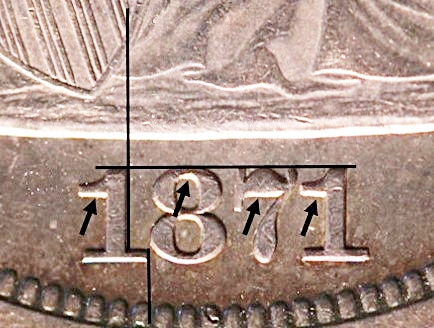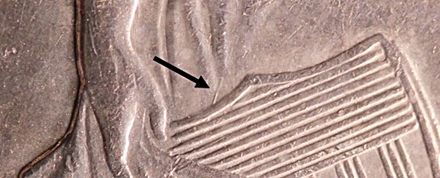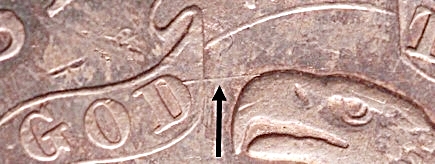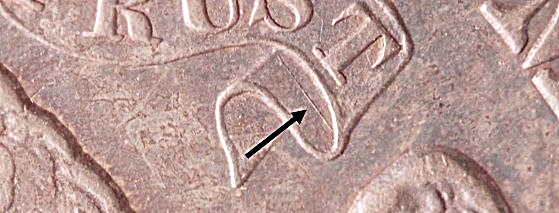|
|
Comments: This is the second of three uses of Obverse 5 (including one re-marriage) and the first of four uses of Reverse B (including one re-marriage). |
Obverse 5 The photo below shows the Obverse 5 attribution grid. Obverse 5 also displays minor repunching on the date, visible below the prominent digits. The arrows point to these features.  1871 Obverse 5 attribution grid and date repunching Another die marker is a die line in the gown above the left side of the upper edge of the shield, shown below.  1871 Obverse 5 die line above shield
|
1871 Reverse B features two notable die lines, pictured in the next two photos, that allow quick identification of mid- to high-grade examples. Note that these die lines are much weaker on state c of the reverse due to die polish.  1871 Reverse B die line near eagle's beak  1871 Reverse B die line in fold under TRUST
|
| Photo credits:
Obverse 5: 1871 PCGS MS61, from the Osburn-Cushing reference collection. Reverse B: 1871 NGC AU55, from the Osburn-Cushing reference collection. |
